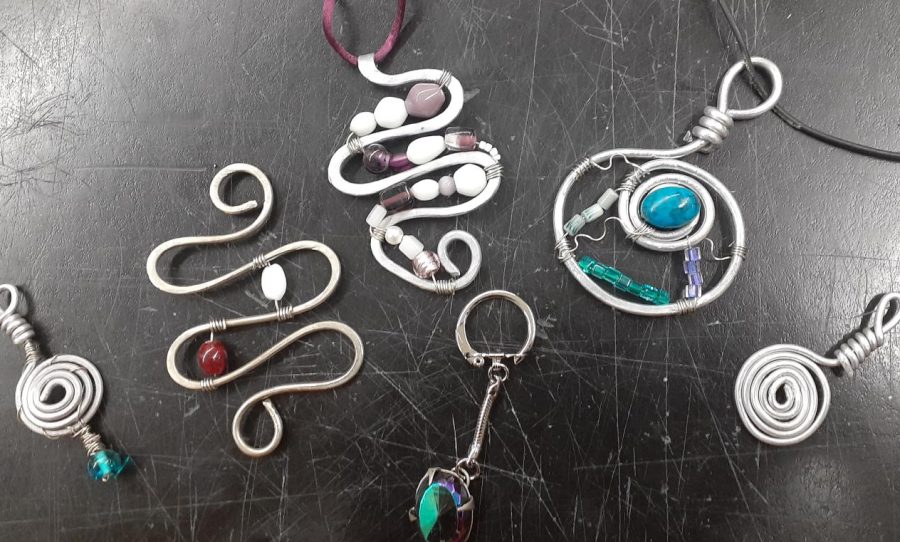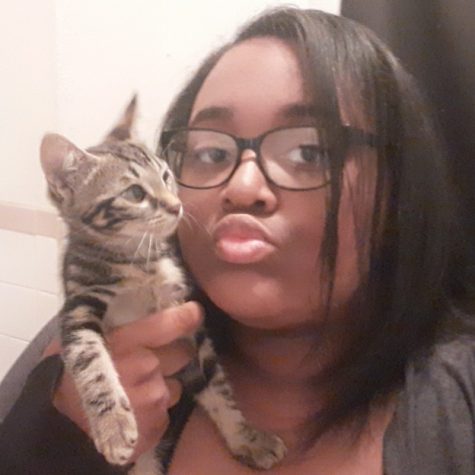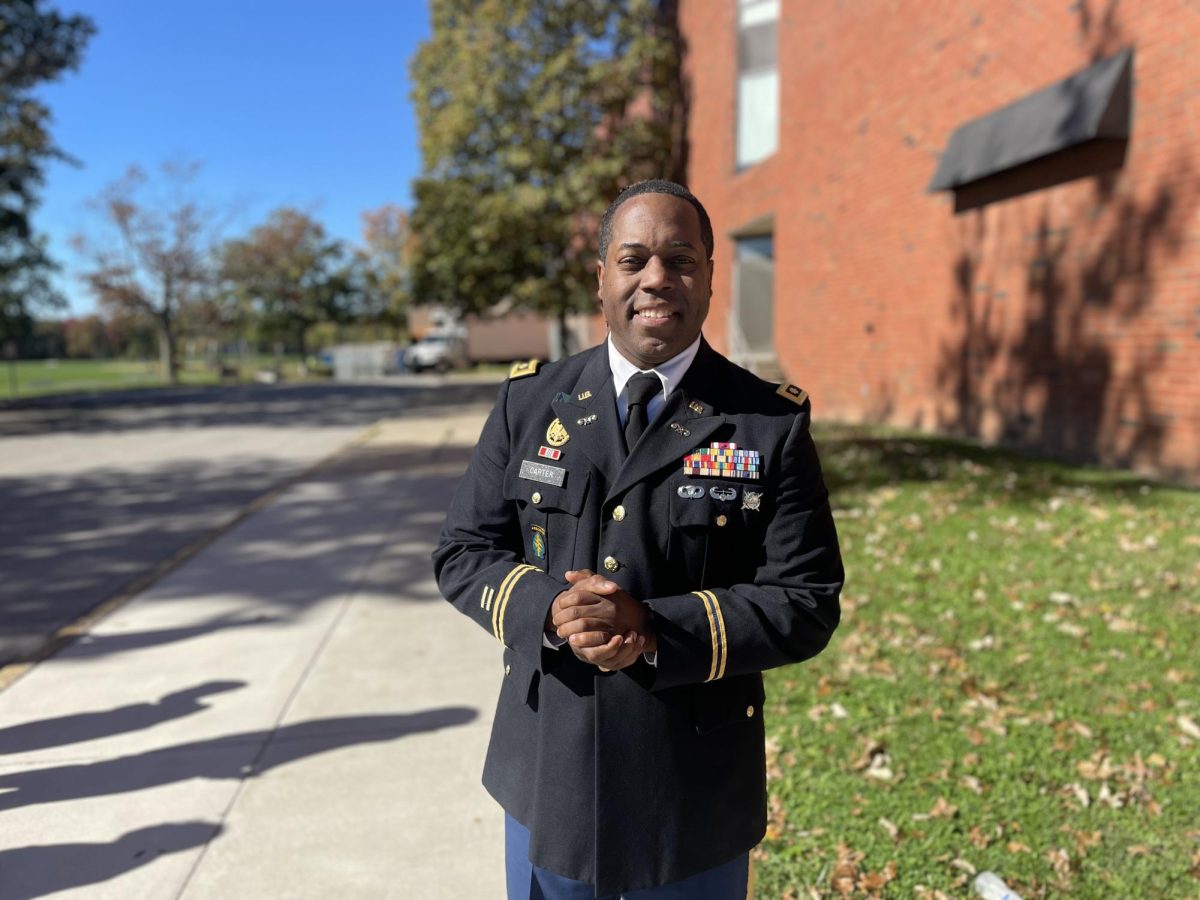Artistic Expression Rings Through Jewelry & Sculpture Class
October 28, 2022
Making jewelry is typically a hobby you’d probably either grow up with as a family tradition or maybe it’s even something you’d think about taking up later on in some art school. Although it seems like an advanced craft that would require a lot of skill, there’s no need to worry about not having any experience or waiting until you get into an art school. Right here in NAHS, we have our very own jewelry-making class called 3D Studio: Jewelry & Sculpture, taught by art teacher Susan Guido.
Although she teaches the jewelry-making class, Guido is not the person who created the class itself. The person who created the class was a teacher named Philip Smith, who worked at NAHS 36 years before Guido began working as a teacher. Smith came into NAHS with a passion for 3D art and created the jewelry-making class from the ground up, supplying NAHS with the machinery and technology we use in that class now. Leaving his artistic legacy behind, Smith retired in 2007. Art teachers Jessica Kirker and Guido described him as a very dedicated artist and educator.
The class has been around since the school first opened. However, there was a small hiatus due to covid. The machinery stayed off, the tools remained untouched, and all of the materials were left without any purposeful use. But thanks to Guido, the class has become active again starting this school year.
Originally a substitute teacher at the time, Guido was excited when she was offered a teaching position here at NAHS by Ms. Marty-Walls, who had been the vice principal in 2007. She was overjoyed to know that she could finally have her own class and teach what she’s always wanted to teach: art. While she teaches jewelry-making, she teaches Art Major II classes as well, which mainly deal with 2D media. “I really like what you can do with jewelry,” said Guido. “It’s a 3D medium and it’s functional. I do love 2D work, but 3D work has a unique quality, and you can use it to express yourself and share yourself with others.”
As someone who takes the class, I highly recommend other artistic kids give it a try. The class is overall therapeutic and by far one of my favorites. We make our projects from scratch, which helps expand our creativity and originality through lines of wire or metal sheets of brass, silver, and copper. We’ve made keychains, pendants, earrings, necklaces, and much more. Before taking the class, I never thought I’d actually be able to make jewelry. It seemed like such an advanced thing, and as a digital artist, I didn’t think I’d be too great at it. However, you learn the basics first, and over time, you just get the hang of it, and you’re able to flow through the class.
“You can make whatever you want and put it to good use. It’s overall a pretty fun hands-on class,” said senior Jonathan Morgridge. One of the faster workers in the class, Morgridge often runs through the projects with a hard-working mindset. The beauty of his productivity in the class is that despite having no experience in jewelry making before this class, he’s able to catch on easily and create as if he’s had enough experience beforehand.
“Making jewelry in general is fun, calming, and therapeutic. It gets your mind off of a lot of things because you’re focused on working with metal and other materials. I actually make jewelry myself, like earrings, necklaces, and wire wraps,” said another classmate who wanted to remain anonymous.
“My favorite part is learning how to make jewelry,” said Nyx Urey. “It’s really fun and gives me something to do since at first I just went home and worked. I may even go back to selling jewelry, using what I’ve learned in this class.” Urey tends to understand the patience needed in this class, especially since she’s a perfectionist. With jewelry making, to reach your view of “perfect,” there needs to be a lot of patience and dedication when working on the piece.
While many may struggle to come up with ideas or find the motivation to create, Guido asks a question in this class to help get the mind going and provide an attachment to the piece before it’s actually created: “Who is it for, and what is its purpose?”
Kirker is a 3D artist as well, her room neighboring the jewelry-making room. “It’s unlike any other class that’s offered here. It’s a unique experience, there are unique tools, and it gives you a greater appreciation for jewelry and metalwork in general,” said Kirker. “It’s not just acrylic and resin; you get an introduction to the sense of pretty much anything from wire wrapping to handling metals because of the variety. It’s a really beautiful thing.” She’s one of the many who appreciates jewelry making greatly, especially since jewelry can tie into other artistic topics such as ceramics.
The jewelry-making class opens up a whole new world for younger artists here at NAHS. They get to try out a new medium of art, one that’s not commonly found in other Highschools. Students have the opportunity to express themselves and show what they can really do through a more hands-on course rather than only working with a 2D medium such as pencil and paper.



